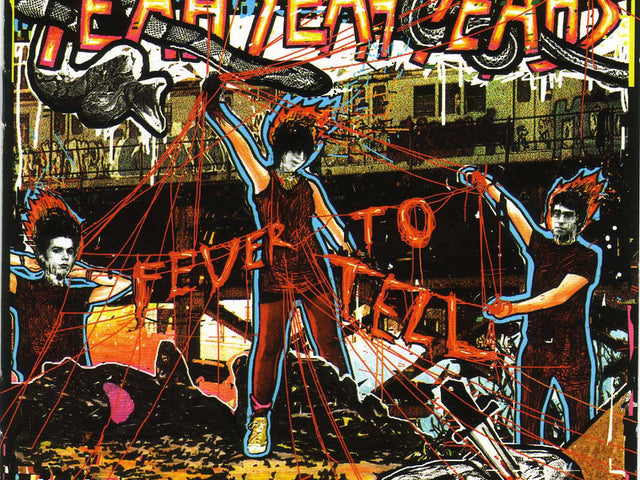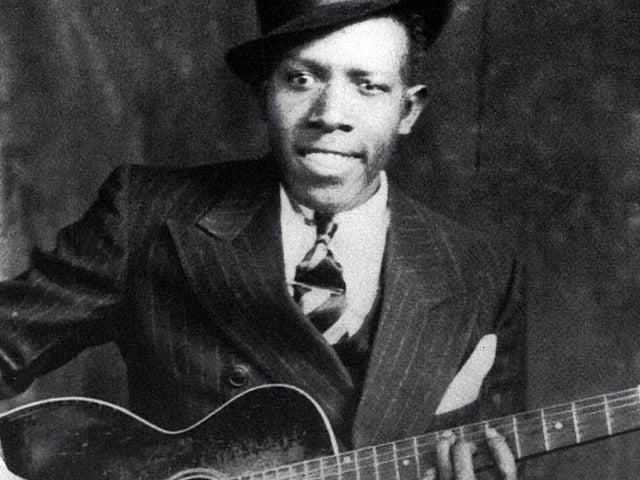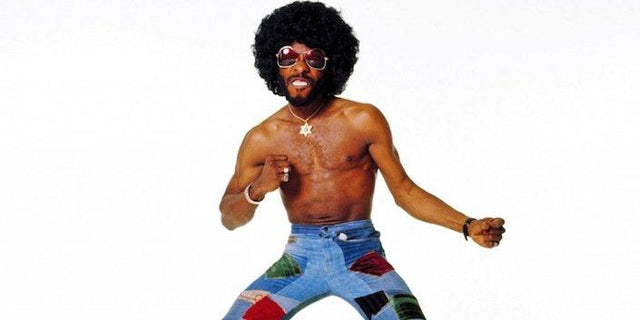10 อัลบั้มที่ดีที่สุดของครอสบี, สตีลส์ และ/หรือแนชที่ควรมีในแผ่นเสียง
ถ้าคุณต้องเล่นเกมห้าการแยกที่มีสไตล์เควินเบคอนกับดนตรีร็อคในปลายปี 60 และต้นปี 70 คุณจะพบว่ามันยากในการหาวงดนตรีที่มีการเชื่อมต่อเกินกว่าความสัมพันธ์ของ Crosby, Stills & Nash ไม่ว่าจะเป็นการเล่นด้วยกันในวงที่แยกต่างหาก การขับร้องให้ศิลปินคนอื่นในฐานะนักดนตรีเซสชัน หรือการเรียกคนอื่น ๆ มาเพื่อทำเช่นเดียวกันสำหรับพวกเขา ทั้งสามนี้ทำงานร่วมกับเทพเจ้ากีตาร์อย่าง Mike Bloomfield, Eric Clapton และ Jimi Hendrix; นักร้อง-นักแต่งเพลงที่เป็นสัญลักษณ์อย่าง Joni Mitchell, Rita Coolidge และ Chris Hillman; และสมาชิกต่าง ๆ จาก The Grateful Dead, The Mamas & The Papas, Jefferson Airplane และ The Beatles เท่านั้น Last Waltz ของ The Band ที่มีแขกคับคั่งสามารถเข้าใกล้พลังดาวที่แท้จริงในใจกลางของ Venn diagram รวมของ CSN ได้
Another sign of the band’s enviable rolodex: Stephen Stills insists that CSN first convened at Joni Mitchell’s house, while Graham Nash and David Crosby say it was Mama Cass Elliot’s house. Whatever the case, by the time they started playing together in 1968, all three had already logged time in successful bands: Crosby in The Byrds, Stills in Buffalo Springfield and Nash in The Hollies. After their self-titled 1969 debut, the supergroup became even more so with the addition of occasional member Neil Young, also formerly of Buffalo Springfield. CSN (and sometimes Y) only released three studio albums before the ’80s, but its members’ partnerships extended beyond into solo and side projects, to the point that the whole “five degrees of separation” idea also applies to non-CSN releases by Crosby, Stills and/or Nash.
In terms of careers outside of CSNY, Neil Young very clearly achieved the most success. He’s got five solo platinum albums to his name, aka five more than anyone else in the group. A top 10 list of Crosby, Stills, Nash and Young albums could easily include five Young LPs, so for the purpose of keeping this interesting, we’re limiting our scope to the group’s three core members. Don’t let Young’s overshadowing talent or the comparatively paltry sales numbers fool you— there’s many a hidden, unjustly ignored gem in the treasure trove of CSN side projects. Last month, our own Gary Suarez did a superb job of shining a light on Stills’ unheralded discography, and today, we expand on that by looking at the best albums that count Crosby, Stills and/or Nash as principle songwriters and performers. Of the six solo or side project albums below, there are only two that don’t feature more than one member of the group. Here they are, in chronological order:

The Byrds: Younger Than Yesterday
Alongside Stills’ blues rock chops and Nash’s pop bonafides, Crosby supplied most of the folkier, jazzier and trippier elements found in CSN’s music. 1967’s Younger Than Yesterday is where he began honing his familiarity with those songwriting tropes. The Byrds’ first few albums are split almost 50/50 between folk covers and compositions by Roger McGuinn and Gene Clark, but as the ’60s progressed, Clark departed and the number of covers steadily decreased, allowing other band members to try their hands at songcraft. Crosby, previously just a rhythm guitarist and backing vocalist, got his first solo writing credit on 1966’s Fifth Dimension, and the following year he penned over a third of the band’s next album. Whereas its predecessor leaned full-bore into trendy psychedelic pop-rock, Younger Than Yesterday drew from a broader palette, from the jangle pop of The Byrds’ early hits, to the folk of their forebears, to the country-rock that would define first-time songwriter Chris Hillman’s later exploits, and even to jazz-inflected rock backed by South African legend Hugh Masekela.
Crosby, for his part, kept a steady thrum of folk in the band’s DNA while incorporating psychedelia more subtly than McGuinn did on Fifth Dimension’s many space-themed freakouts. Between the baroque retrophilia of “Renaissance Fair,” the bad-trip comedown of “Everybody’s Been Burned,” and the beatless, swirling “Mind Gardens,” Crosby’s contributions to this classic Byrds album mark the earliest hints of CSN’s future amidst the rich late ’60s scene from which they’d soon emerge.

Buffalo Springfield: Buffalo Springfield Again
On Buffalo Springfield’s first album, Stills and Young split songwriting duties right down the middle. On their second, Richie Furay’s foray (sorry) into composition gave each guy his own third of the album. By their third and final offering, the addition of Jim Messina further crowded the credits. In short, this band was a tinderbox of egos that ignited brilliantly for exactly one album. Buffalo Springfield Again, Springfield’s sophomore LP that was released in the sweet spot between Young’s two hiatuses from the band in 1967, is that album. Somehow, against all odds, this came together not as a jumble of eclectic tracks, but as a cohesive song cycle. Furay’s down-the-middle impressions of country (“A Child’s Claim to Fame”), folk (“Sad Memory”) and R&B (“Good Time Boy”) grounded the album in between some of the most experimental songs Stills and Young recorded in their careers. As a result, Buffalo Springfield Again sounds like it was recorded by a straightforward ’60s rock group who took naps in between takes and had LSD fever dreams, which were somehow laid to tape and interspersed with the more traditional jams. A snapshot of the transitional moment between Dr. Jekyll and Mr. Hyde, this album shows buttoned-down rock morphing into the weird beast it became in the late ’60s.

Crosby, Stills & Nash: Crosby, Stills & Nash
Those voices! All three members of this group had toyed around with harmonization in their previous gigs, but nothing could have prepared listeners for the seven minute tour-de-force of vocal arrangements that is the Crosby, Stills & Nash opening track “Suite: Judy Blue Eyes.” Like the best debut albums from the laboratory-constructed supergroups that were a dime a dozen in the late ’60s, CSN’s first felt like an awakening of talent—each player had already shown their skill set, but were underutilized in their previous roles. Stills flexed his penchant for multi-part epics on “Judy Blue Eyes” and “Wooden Ships,” Crosby further developed his rep as the druggy, mystical one on “Guinnevere” and “Long Time Gone” and Nash’s delicate tenor glided over the surface of the entire album, the guiding light of the many three-part harmonies. The band would soon boil their unimpeachable talents down into something more pop-savvy, but this inaugural 1969 offering bears a youthful creative spark, the sound of musicians finding their equals and reveling in the freedom allowed by each other’s strengths.

Crosby, Stills, Nash & Young: Déjà Vu
Despite Young’s aforementioned commercial success as a solo artist, none of his albums have sold half as many copies as Déjà Vu, the septuple-platinum 1970 album that stands as CSNY’s towering accomplishment. Its opening seven songs play like a greatest hits compilation to anyone familiar with folk-rock, and indeed, five of those songs would later appear on 1974’s So Far, the band’s preemptive greatest hits collection. With songs about free love (“Carry On” and “Everybody I Love You”), intergenerational friction (“Teach Your Children”), pastoral self-sufficiency (“Our House”), Woodstock (“Woodstock”), long hair (“Almost Cut My Hair”) and weed (“4 + 20”), the album functions as a paint-by-numbers outline of hippie culture, perhaps the most succinct list of demands the countercultural movement ever produced. Along for the ride were John Sebastian of The Lovin’ Spoonful, who played harmonica on the title track, and Jerry Garcia, who lent his newly minted pedal steel guitar chops to “Teach Your Children” in exchange for vocal harmony lessons that The Grateful Dead would soon put to use on American Beauty. Déjà Vu’s sales numbers and cultural currency may unfairly inflate its reputation—as does the fact that it’s Neil Young’s only studio album with CSN—but it still sounds as pristine as ever.

Stephen Stills: Stephen Stills
The smash success of Déjà Vu effectively bankrolled solo projects for every member of CSNY, and during the last half of 1970 and the first half of 1971, each one rose to the occasion with a stellar LP. Two months after Young’s stunning After the Gold Rush, Stills was the second member to step out. Of every solo and side project in CSNY’s collective discography, Stephen Stills is undoubtedly the most star-studded, with famous guests popping in on nearly every track. Booker T. (of the MG’s) lends organ to one song; Ringo Starr plays drums on two; Crosby, Nash, Rita Coolidge, John Sebastian and Mama Cass Elliot all lend backing vocals throughout. Most importantly, Stills’ debut is the only album to ever feature both Jimi Hendrix and Eric Clapton, who solo on “Go Back Home” and “Old Times Good Times,” respectively. With the help of Stills’ friends, the album cast his unique contribution to CSN into relief, showcasing his ability to carry harmonies despite a more ragged, bluesy voice, a well as his willingness to swing between a wide range of distinctly American genres. Lead track “Love the One You’re With” became the biggest CSN solo hit, but the rest of the album holds a wealth of great material that often gets overlooked in its wake.

David Crosby: If Only I Could Remember My Name
Easily the least consistent, least instrumentally gifted member of CSN, Crosby has always seemed to have trouble doing things on his own. His 1971 debut wouldn’t get followed up until 1989, by which point Stills and Nash already had a combined 10 solo albums between them. But what you lose in Crosby’s work ethic and compositional ability, you gain in ineffable cool. Part of this comes through in his mystical lyrics, the rest in his revolving door of amazingly talented friends. Whereas Stills played upwards of six instruments and arranged string and horn parts on his debut album, Crosby only sings and plays rhythm guitar on If Only I Could Remember My Name. The rest of the instrumentation is carried out by a Voltron-like collection of members from the three best San Francisco bands of the day, The Grateful Dead, Jefferson Airplane, and Santana. Throw in assists from Nash and Joni Mitchell, and Crosby barely had to lift a finger to ensure his debut’s success. Luckily he did, penning a suite of songs rife with spirituality, existential questioning and hallucinogenic fervor, a revelatory journey out of the ego. If Only I Could Remember My Name was a quicksilver success—the stars must have aligned during one of Crosby’s trips—that neither he nor any freak-folk disciple could replicate. There’s nothing like it in the rest of the CSN discography.

Crosby, Stills, Nash & Young: 4 Way Street
The blockbuster live album was a hallmark of the ’70s, and continuing to check all of the boxes in the supergroup checklist, CSNY turned in one hell of a double album. By 1971, these four had a wealth of material to pick from when constructing their setlists, and fittingly, 4 Way Street contains tracks from everyone’s solo careers, as well as old Buffalo Springfield, Byrds and Hollies songs. Split between acoustic and electric discs, the album definitely improves in its second half, where we get the rare opportunity of hearing Stills and Young cut loose together on monster jams of “Southern Man” and “Carry On.” Not to lose ground in the tracklist, Crosby and Nash are given plenty space for their solo cuts on the first disc, which rewards us with beautiful renditions of then-unreleased gems like “The Lee Shore” and “Right Between the Eyes.” This comes back to bite us, however, with the inclusion of Crosby’s “Triad,” a cringeworthy ode to threesomes that members of The Byrds and CSN hated so much that neither would include it on a studio album. 4 Way Street succeeds in spite of the egos and drugs that allegedly caused so many fights backstage during CSNY’s tours—you’d never know it from listening to the four bandmates democratically trading off songs on the album. I guess that’s the price of having amassed such a diverse, high quality songbook over just five years.

Graham Nash: Songs for Beginners
Nash’s contribution to CSNY’s post-Déjà Vu diaspora is an album that, like Crosby’s If Only I Could Remember My Name, was initially overshadowed by Young and Stills’ solo output but has become a cult favorite among indie musicians in the last 20 years. A deeply personal album that mainly deals with the dissolution of Nash and Joni Mitchell’s two-year relationship, Songs for Beginners transcends standard breakup albums by tying in political tracks and achieving an optimistic sense of closure by its finale. The song “Chicago” echoes CSNY’s “Ohio” in its criticism of police and military brutality against anti-Vietnam protestors, and opening track “Military Madness” is an indictment of the military-industrial complex that’s been covered in recent years by Death Cab for Cutie and Woods. Elsewhere, famed session saxophonist Bobby Keys lends a searing solo on “There’s Only One,” and the resplendent “I Used to Be a King” is bolstered by an all-star band comprised of Crosby, Young, and The Grateful Dead’s Jerry Garcia and Phil Lesh. Songs for Beginners is now so beloved by open-hearted folkies that Robin Pecknold, Bonnie Prince Billy, Vetiver and others of their ilk teamed up for a tribute album in 2010. While CSN’s pristine harmonies had influence both immediate and lasting on rock, pop and folk music, it’s Songs for Beginners and If Only I Could Remember My Name’s tightly-crafted, personalized worlds of micro-pop that you’ll find in your favorite musicians’ record collections.

Manassas: Manassas
Whereas Crosby and Nash guested on each other’s early solo output, and later released a string of collaborative albums together, Stills seemed more intent on forging his own path away from the group that had brought him widespread acclaim. He was, after all, the most accomplished musician of the three. His multi-instrumental prowess and deep study of genres like blues, soul, country and even Latin funk seemed to attract more “serious” musicians into his orbit, starting with the mouthwatering lineup on his self-titled debut, and leading on into Manassas, his next band. For the group’s towering, double-disc opening salvo, he recruited former Byrd and Flying Burrito Brothers’ Chris Hillman, pedal steel wiz Al Perkins, CSN drummer Dallas Taylor, Rolling Stone’s Bill Wyman, and to lend his Latin excursions further credibility, conga master Joe LaLa. Manassas’ self-titled 1972 album justifies its runtime and all-star cast with neatly divided sections, a rarity among the many bloated two-LP releases of the ’70s. A Latin-rock hybrid defines side one, then Hillman and Perkins take the reins on the country-flavored flipside; disc two is split between folk that builds on Stills’ CSN material, and an all-out blue-rock assault to close out the 70-minute-long opus. Considering its heady exploration of Americana and the spacey synths Stills debuts on the album, Manassas is best described as a loving continuation of Hillman’s recently-deceased bandmate Gram Parsons’ idea of “cosmic American music.” The band, which only lasted two years, was by far the most democratic of the post-CSNY projects, with Stills clearly most content when he could split time between songwriting and instrumental accompaniment.

Crosby, Stills & Nash: CSN
All nine previous albums on this list were released over the five-year period from 1967-’72, so 1977’s CSN is a clear outlier. The interim between Manassas’ breakup and CSN was a turbulent time for the band, who rejoined Young for a huge, disastrous tour in 1974 that ultimately drove the members further apart. CSN (and sometimes Y) were unsuccessful in their many attempts to follow up Déjà Vu until 1976, when Young had ruled himself out and the remaining three members hit the studio with workhorse producers Ron and Howard Albert. Against all odds, the resulting album made it seem like the group had aged gracefully, even if that was far from the truth. By situating themselves alongside the then-booming California soft rock sound, CSN wound up with a commercial success that ended up playing to their tranquil, harmonious strengths. In a perfect world, this would have been a scene that CSN pioneered and dominated from the start, what with their angelic vocals and session-ready tightness as a band, but interpersonal drama forced the band to find a backdoor into radio playlists dominated by The Eagles, The Carpenters and America. CSN puts a hi-gloss sheen on the band, but they wear it well. Nash’s breezy “Just a Song Before I Go” became the band’s highest-charting hit, and CSN ended up outselling their 1969 debut. Both accomplishments speak to the group’s influence, which could be felt as early on as Woodstock and persisted in the mainstream all the way through the ’70s. Neil Young aside, most of Crosby, Stills and Nash’s famous friends can’t say that about their own music.
แพทริค ลิโอนส์ เป็นนักเขียนด้านดนตรีและวัฒนธรรมจากรัฐวอชิงตัน ปัจจุบันอาศัยอยู่ในพอร์ตแลนด์ รัฐโอเรกอน เขาหลงใหลในทั้งดนตรีแบล็กเมทัลและฮิปฮอป คุณจะพบเขากำลังเลือกเพลงที่หลากหลายและแปลกประหลาดบนสาย AUX เสมอ
เข้าร่วมคลับ!
เข้าร่วมตอนนี้ เริ่มต้นที่ $44
ส่วนลดพิเศษ 15% สำหรับครู ,นักเรียน ,ทหาร ,ผู้เชี่ยวชาญด้านการดูแลสุขภาพ & ผู้ตอบสนองครั้งแรก - ไปตรวจสอบเลย!







